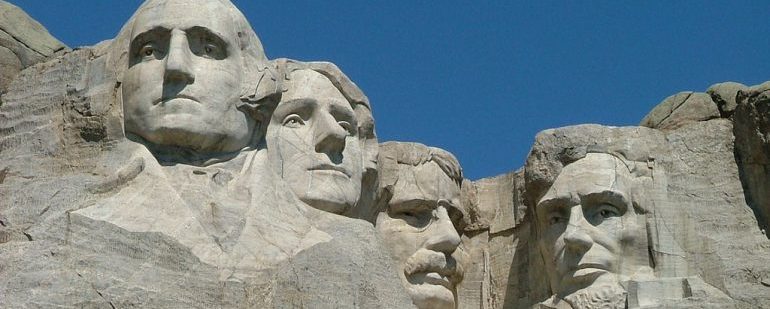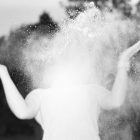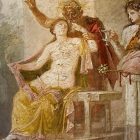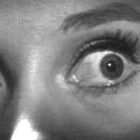Accessing Social History through Books

By Hmsbach (Own work) [CC BY-SA 3.0 (http://creativecommons.org/licenses/by-sa/3.0)], via Wikimedia Commons
Fast forward fourteen years and I picked S.C. Gwynne’s, Empire of the Summer Moon off of the employee recommendations display at a Boston bookstore. Gwynne’s book is an enthralling account of the forty-year battle the Comanches fought against white settlement. The book is centered around the life of the last Comanche chief, Quanah Parker. Quanah’s mother, Cynthia Ann Parker, was a white settler, kidnapped by Comanches as a young girl. Her son would become the leader of the last free band of Comanches, eventually surrendering to the United States government in 1875.
After finishing Gwynne’s book, my reading life hasn’t strayed far from narrative histories in the eras of the Civil War and the settling of the American West. Other books I’d highlight are Short Nights of the Shadow Catcher, by Timothy Egan about the life and work of photographer Edward Curtis; 1491, by Charles C. Mann, a history of the Americas before Columbus; and The Last Stand by Nathaniel Philbrick. I still haven’t read Lies my Teacher Told Me and, ironically, by not reading it I proved the author’s point that “the bland, Eurocentric treatment of history bores most elementary and high school students, who also find it irrelevant to their lives.”
It is a hard task to engage a citizenry in its history. And this is convenient for the powers that be. Curiosity about the past leads to destabilization of your worldview and a necessary re-writing of the present— There are people alive in this country today whose lives overlapped with Quanah Parker’s; Many of the so-called “Indian Fighters” were civil war heroes; Forty percent of the Union Army were foreign-born soldiers, or sons of immigrants; Abraham Lincoln, the Great Emancipator, also signed off on the largest mass execution in United States history, the hanging of 38 Dakota men who had taken part in a desperate uprising in Mankato Minnesota; This year is the 100th birthday of our National Parks, but how exactly did they come to be?
I want to know the whole story, especially the hidden parts. Were there Americans in the middle of the 19th century who objected to the destruction of Native American lives? Does our morality evolve as a society? How can it if we don’t value an objective view of our past? And finally, what were all the writers doing?
Writers were pushing boundaries, naturally. They were writing in ways that would define American literature, a language newly made, independent from European tradition. Take Walt Whitman and Emily Dickinson, for example, the first truly American voices in poetry. Whitman, who did not enlist, wrote many poems about the civil war and spent years caring for wounded soldiers. As for Dickinson, it’s hard to know what she thought about much of anything but she does have a few humanistic lines on war, like “My Triumph lasted till the Drums/ Had left the Dead alone/ And then I dropped my Victory”.
Every writer need not have a social agenda. Whitman and Dickinson have done plenty for American poetry but they don’t really help to answer my questions. Were they unaware of the atrocities the US government inflicted on Native Americans? How could anyone support the end of slavery while simultaneously supporting the extermination of Native society and theft of their land? I can imagine that the Civil War was all-consuming in the American psyche. Perhaps, in their defense, Whitman and Dickinson and the majority of Americans were uninformed.
I’ve been told not to judge people outside of their time, which I find challenging. Whitman, Dickinson, and others must have been aware. Whitman’s oeuvre includes poems about Native Americans. At best they contain a sense of admiration and nostalgia for a dying race, but they evade the moral conflict of “the Indian problem.” Whitman and Dickinson were not, as individuals or as members of a generation of literate Americans, uninformed. In fact, the poet, novelist, and short story writer, Helen Hunt Jackson, who was a grade-school acquaintance of Emily Dickinson’s, became a passionate and outspoken advocate for Native Americans. She wrote the non-fiction book A Century of Dishonor in 1881, chronicling the injustices imposed by the US government on Native Americans. There must have been more Americans like Jackson.
Then, as now, these voices remain hidden. In the past weeks, mainstream newspapers began to cover the protest by Native Americans of the Dakota Access Pipeline. The movement started in April of this year, but not until Native protesters were able to stop construction did the protest make news. Today there are thousands gathered to defend their rights to their land and clean drinking water, but the images of this peaceful protest have not been shown to the millions of non-native Americans who watch television.
It’s been five years since I read S.C. Gwynne’s book, 105 years since Quanah Parker’s death and 140 years since the Battle of Little Bighorn, fought on the very lands the Dakota are currently trying to protect. This year Americans will choose between Donald Trump and Hillary Clinton. They are the best we can do. Bernie Sanders, who lost the democratic nomination, has become increasingly vocal in his support of the Dakota Access Pipeline protest, an issue which effects all Americans. In the context of our past, this should not come as a surprise. History can only enlighten a society that reads it.



